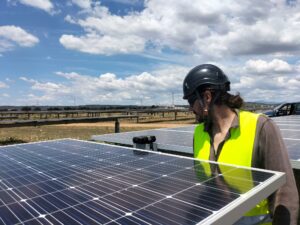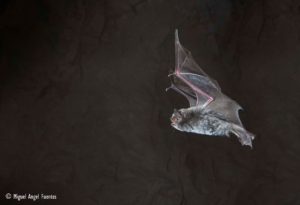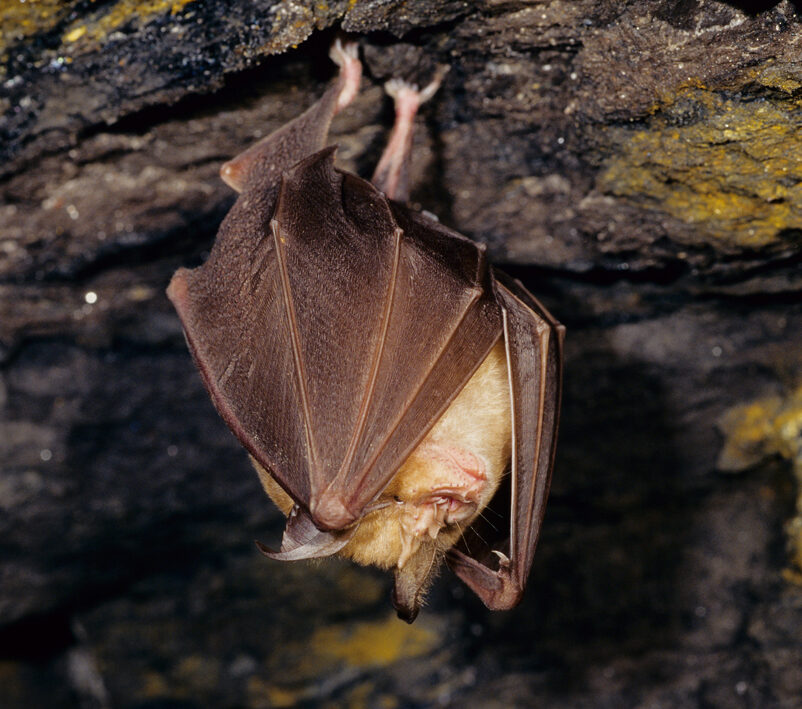The program, which is carried out in collaboration between the CTFC and Endesa, studies the behavior of bats and proposes improvement measures to favor their conservation in hydroelectric facilities, locations that due to their environmental conditions can be ideal shelters for these species in a vulnerable situation.
Throughout this decade of research, a total of 26 species of bats have been identified (representing 80% of the species in Spain) in 50 locations distributed among Andalusia, Aragon, Castile and Leon, Catalonia, and Galicia.
This year, the Batsolar program has been launched, a pilot test in six solar plants in Badajoz and Cáceres (Extremadura) in which ultrasound recorders have been installed to determine the movement of the bat population.
The light, humidity and weather conditions in hydroelectric power plants and their auxiliary infrastructures make them ideal shelters for bats, a group of species that are quite endangered in our country and of very high value for our ecosystem. For this reason, exactly 10 years ago, the Endesabats project was initiated between the Forestry Science and Technology Centre of Catalonia (CTFC) and Endesa.
The project, which originated with the discovery of some colonies of bats in the galleries of power plants, was launched in the Catalan hydroelectric power plants of Orfes in Alt Empordà (Girona) and Camarasa in La Noguera (Lleida). Ten years later, it has reached a total of 50 locations in different parts of Spain.
In total there are 22 hydraulic power stations and 28 natural caves near rivers in Andalusia, Aragon, Castile and Leon, Catalonia, and Galicia, where a total of 26 bat species have been identified (80% of the 32 species in Spain).
 As an innovative fact, and after ten years working in the hydroelectric environment, this year the project has taken a leap and has been extended, in a pilot test, to six solar plants in Extremadura, giving rise to BatSolar. These are the Zurbarán, Quijote and Hernán Cortés plants (in Cáceres) and the Castilblanco, Navalvillar and Valdecaballeros plants (in Badajoz). This project is currently in an initial phase: ultrasound recorders have been installed inside and outside the solar enclosures to evaluate the richness and abundance of bats and to make a comparison with the surrounding natural areas to detect possible differences in activity and diversity.
As an innovative fact, and after ten years working in the hydroelectric environment, this year the project has taken a leap and has been extended, in a pilot test, to six solar plants in Extremadura, giving rise to BatSolar. These are the Zurbarán, Quijote and Hernán Cortés plants (in Cáceres) and the Castilblanco, Navalvillar and Valdecaballeros plants (in Badajoz). This project is currently in an initial phase: ultrasound recorders have been installed inside and outside the solar enclosures to evaluate the richness and abundance of bats and to make a comparison with the surrounding natural areas to detect possible differences in activity and diversity.
Endesabats was born with the aim of improving the knowledge of cave bats, a group of mammals that is unique and little studied, to share it with the scientific community and contribute to the improvement of their conservation. The 32 species of bats that have been found in Spain so far are included in the Spanish List of wild species under special protection: 12 of them are vulnerable, and one, the big-footed bat (Myotis capaccinii), is in danger of extinction. It should be remembered that all European chiropteran species are protected and many of them are globally threatened. Far from the tenebrous aspect that literature and fiction have created around these flying mammals, the reality is that they are harmless beings that flee from human presence and are of great ecological importance as predators of nocturnal insects; they are also important allies of agriculture and forestry in pest control.
Given this situation, finding habitats that favor their conservation and promoting them is of great importance. In this regard, the galleries, tunnels, and caverns of hydroelectric power plants become suitable refuges for bats as they provide ideal conditions of darkness, temperature, and tranquility. In addition, these spaces are close to rivers with calm waters and marshes, which is a guaranteed source of food for these insectivorous species.
 These ten years of Endesabats have allowed the study of the bat population through the installation of infrared cameras, ultrasound recorders, and the capture of specimens to obtain biometric data. The results obtained have made it possible to adopt specific measures in the hydroelectric power plants, such as the modification of entry openings to favor the access of the colonies to the interior of the galleries or the installation of refuge boxes at strategic points. Efforts have also been made to promote or expand the carrying capacity of the spaces that have become habitat whenever possible, and to relocate or redirect those colonies whose location is incompatible for safety and health reasons.
These ten years of Endesabats have allowed the study of the bat population through the installation of infrared cameras, ultrasound recorders, and the capture of specimens to obtain biometric data. The results obtained have made it possible to adopt specific measures in the hydroelectric power plants, such as the modification of entry openings to favor the access of the colonies to the interior of the galleries or the installation of refuge boxes at strategic points. Efforts have also been made to promote or expand the carrying capacity of the spaces that have become habitat whenever possible, and to relocate or redirect those colonies whose location is incompatible for safety and health reasons.
Beyond its application in concrete improvements in the facilities themselves, the project is generating a large amount of information and data on these flying mammals. In general, these animals are little studied, but these results are of great value to the scientific community, both for the new and valuable data on the biology and distribution of bats in the areas studied and for the amount of information on the ecology, phenology and population status of endangered species. Furthermore, within the framework of Endesabats, the CTFC is testing new monitoring and survey methodologies that may be very useful for further research.
Last modified: 30 October 2023










